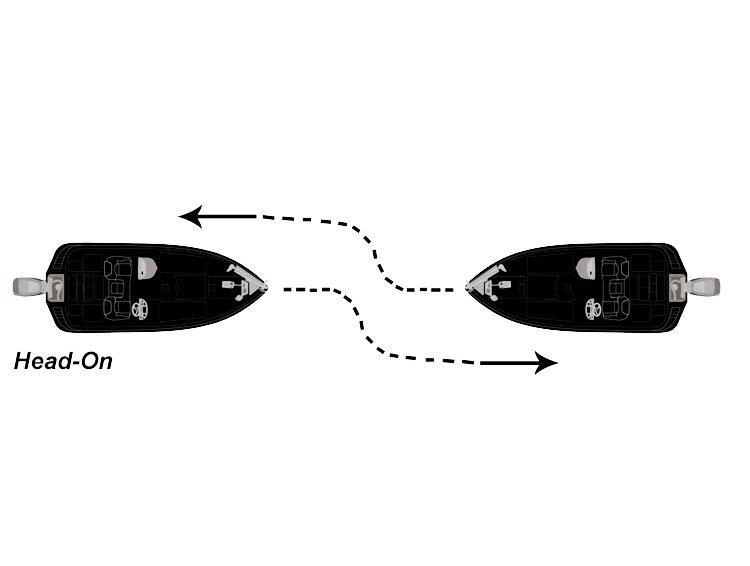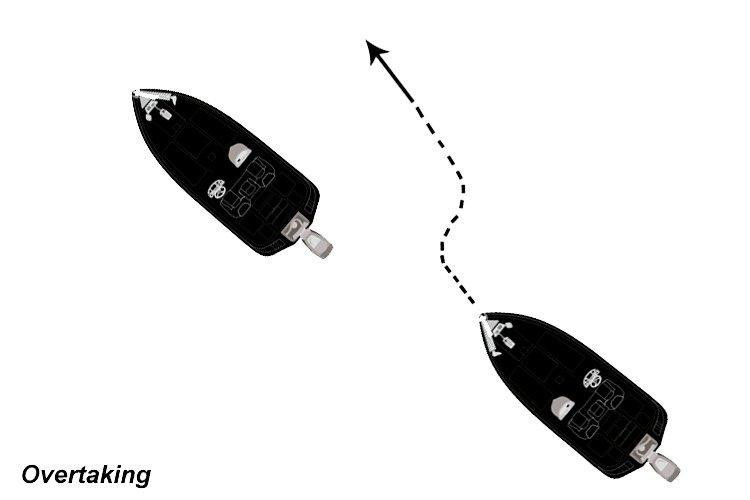Avoiding accidents on the water becomes more important as more folks take to the water each year. On lakes like Kentucky and Guntersville, there are thousands of boats on the lakes every weekend. Everyone that owns a boat owes it to themselves and their loved ones to know how to avoid common situations on the water.
Boat on Boat Situations
Three common situations where boats will come to navigation decisions when approaching each other are head-on, crossing and overtaking boats.
The Head-On Rules
When in doubt, yield right. That will avoid most common problems with boat on boat encounters. When approaching a boat coming at you head-on, both boats are to yield to their right. If because of navigation issues (shallow water), pulling over to the right as much as possible and shutting down will allow the other boat to navigate around you in safe water. In tight situations, slow down and judge the safe area to the right. And use your horn signals (identified in the Horn Blows section).
Crossing Rules
When two boats are crossing in front of each other, the boat to the right is consider the Stand-On Vessel and the other boat is considered the Give-Way Vessel. The Stand-On Vessel (boat on the right) is to continue on a straight course. While the Give-Way Vessel yields and navigates around the right of the other vessel. Again use horn blows as necessary.
Overtaking Rules
When passing another boat, sound a short horn blast to signal your presence and then give a wide clearance and pass the boat on the right (starboard) if possible. If navigation won’t allow passing on the right, then again sound the horn with two short bursts and pass with a wide margin on the left (port). Use caution as boats coming head on may be masked by the forward boat. Don’t put yourself in a situation of passing and having to yield to oncoming vessels.
Note: These rules apply to two boats of power meeting each other on the water. The rules differ for other boats not under power like sailboats. The boat under power must yield to the boat without power and make maneuvers to avoid the boat without power.
Horn Blows
- Turn Starboard (Right) – Short blast
- Turn Port (Left) – Two short blasts
- Going Astern (backing up) – Three short blasts
- Danger (to warn other boats of hazard ahead) – Five short blasts
- Backing up from Dock – One long blast
Navigation Markers
- Red Buoys – Mark right side of channel when going upstream or returning from open seas.
- Green Buoys – Mark left side of channel when going upstream or returning from open seas.
Non Lateral Markers (usually on white buoy with orange lines)
- A square means information (things like fuel, or docks).
- A diamond means danger and avoid that area (shallow or rocks).
- A circle means controlled area, use caution (like a no-wake zone).
- A diamond with a cross means exclusion area (no boats allowed).














